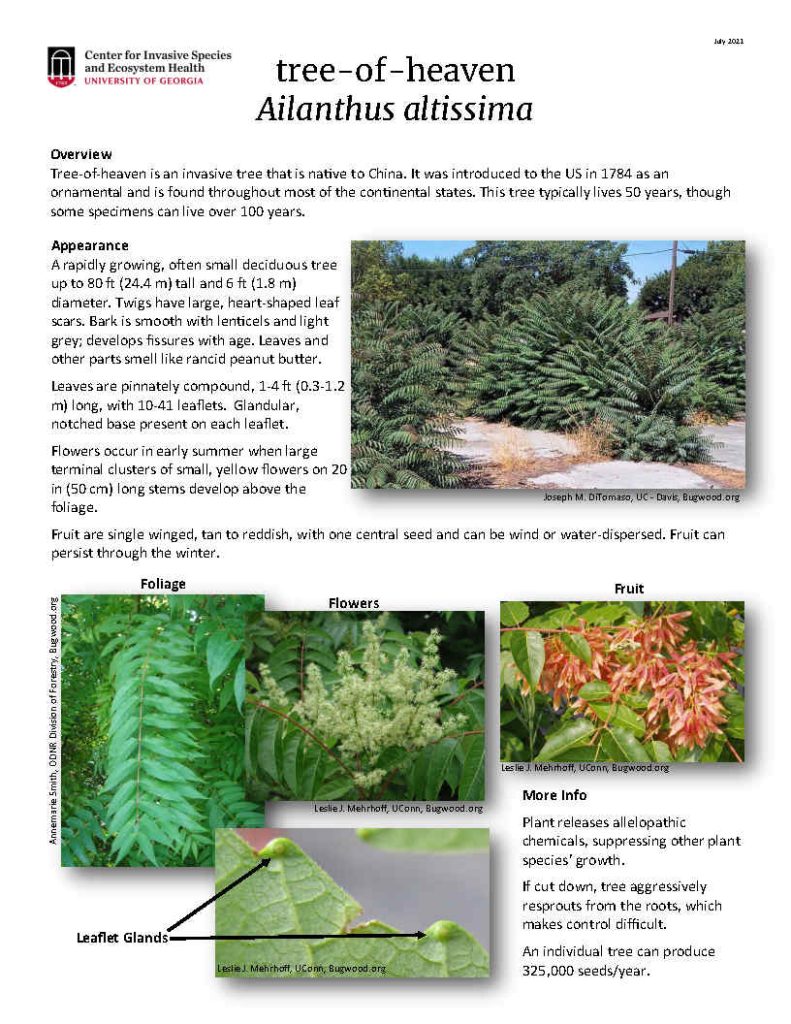
Overview
Tree-of-heaven is an invasive tree that is native to China. It was introduced to the US in 1784 as an ornamental and is found throughout most of the continental states. This tree typically lives 50 years, though some specimens can live over 100 years.
Appearance
- A rapidly growing, often small deciduous tree up to 80 ft (24.4 m) tall and 6 ft (1.8 m) diameter.
- Twigs have large, heart-shaped leaf scars.
- Bark is smooth with lenticels and light grey; develops fissures with age. Leaves and other parts smell like rancid peanut butter.
- Leaves are pinnately compound, 1-4 ft (0.3-1.2m) long, with 10-41 leaflets. Glandular, notched base present on each leaflet.
- Flowers occur in early summer when large terminal clusters of small, yellow flowers on 20 in (50 cm) long stems develop above the foliage.
- Fruit are single winged, tan to reddish, with one central seed and can be wind or water-dispersed. Fruit can persist through the winter.
More Info
- Plant releases allelopathic chemicals, suppressing other plant species’ growth.
- If cut down, tree aggressively resprouts from the roots, which makes control difficult.
- An individual tree can produce 325,000 seeds/year.
Know the Difference! Invasive vs. Native
Native staghorn & smooth sumacs (Rhus typhina & R. glabra) looks similar to tree-of-heaven (Ailanthus altissima).
Native species: staghorn & smooth sumacs (Rhus typhina & R. glabra)
- Leaflets have small, sharp teeth along
- margin; no glands on underside
- Distinct clusters of red, hairy fruits
- No strong, unpleasant odor
Report Invasive Species Sightings
To report sightings: Reporting, maps, and more on invasive, pest, and biocontrol species
Tree-of-heaven fact sheet (pdf)
Know the Difference: Invasive vs. Native fact sheet (pdf)

